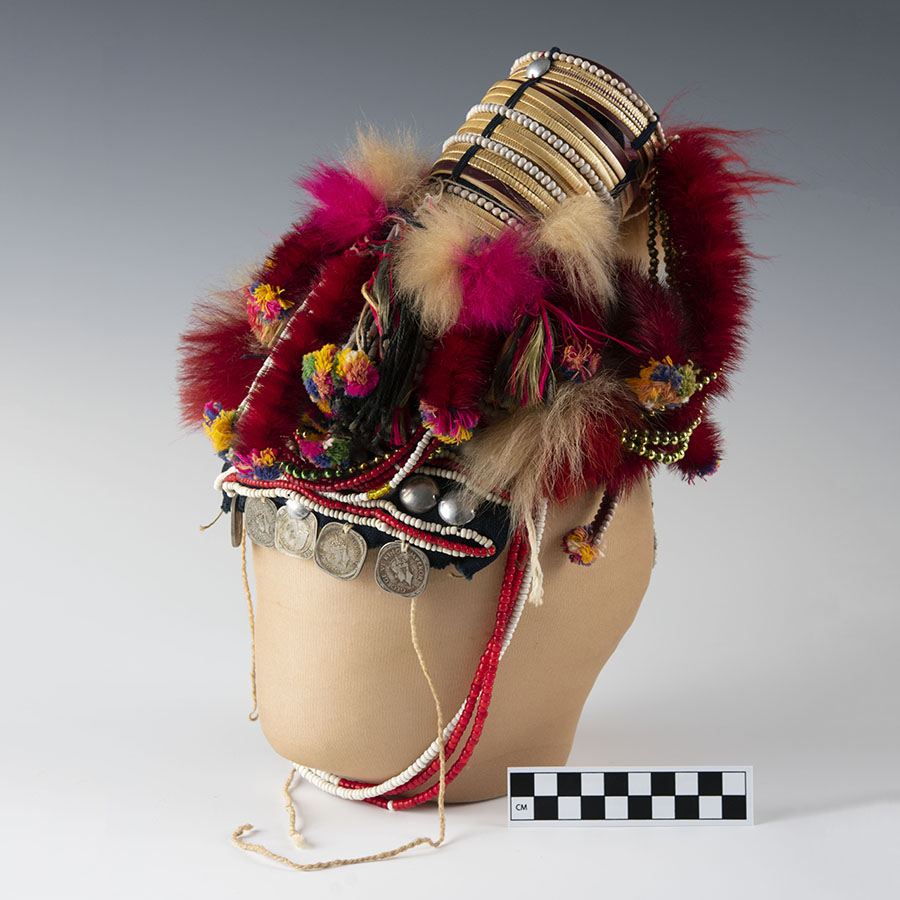

Akha headdress (MMA 75.50.17)
The Akha people of Thailand, Myanmar (Burma), Laos, Vietnam, and Yunnan, China, where they originated, are known for their intricate traditional clothing and ornaments. Women's headdresses are perhaps the most elaborate. The style of headdress is indicative of the region or local tribe of the wearer, as well as her age and marital or social status. Each headdress is decorated by its owner; and each is unique.
This headdress is of a style worn by a married woman from the Ulo Akha subgroup living in the Chiang Rai Province of Northern Thailand (Akha peoples entered Thailand from Burma a little over a century ago). The Ulo Akha are known for their cone-shaped headdresses. This example is made of woven grass fiber and decorated with tufts of gibbon fur, red dyed rooster hackles, strings of Job’s Tears (seeds), and adorned with old Burmese Indian coins along the forehead. Coins are prized decorations and statements of the wealth or status of the wearer. Old silver coins adorn the hats of wealthier women while individuals with fewer resources use coins of lower value, such as low value Thai currency (baht).
These headdresses are integrally intertwined with Akha culture. Girls begin wearing headdresses in mid-adolescence and in the past women wore them every day, even while sleeping. Today, they are mainly worn for special occasions. A woman will add to her headdress over the years and it can become quite complex, such as in this example.
Additional resources: https://tudtu.tripod.com/hillsty1.htm